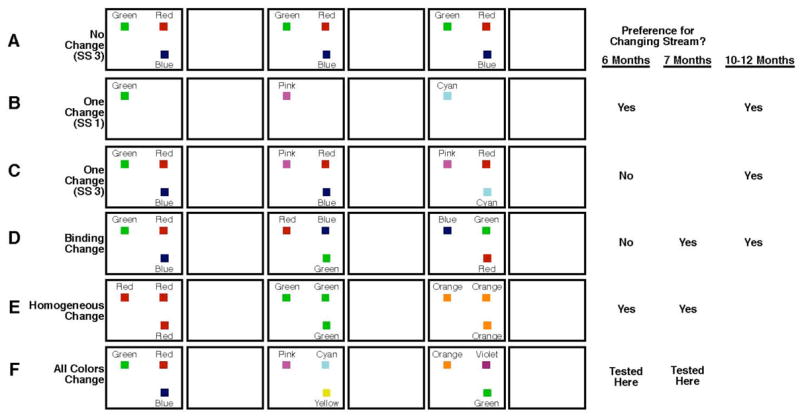Figure 1.

Sequence of events in several different types of stimulus streams: A. Nonchanging streams in which the array is identical from cycle to cycle; B. One-change streams at set size one, in which the arrays contain only one object and that one object changes color from cycle to cycle (Ross-Sheehy et al., 2003); C. One-change streams at set size 3, in which arrays contain three differently colored objects, and the color of a different randomly chosen object changes on each cycle (Ross-Sheehy et al., 2003); D. Binding change streams, in which arrays contain three differently colored objects, and the color-location bindings (but not the particular colors or the particular locations) change from cycle to cycle (Oakes et al., 2006); E. Homogeneous change cycles, in which arrays contain three identically colored objects, and the colors of all the objects change from cycle to cycles (Oakes et al., 2006); and F. All colors change streams, in which arrays contain three differently colored objects, and the colors of all the objects change from cycle to cycle. In addition, to the right of each cycle, we present what we know about whether infants prefer each type of changing stream when it is paired with a non-changing stream (illustrated in A. for each of the comparisons except for the homogeneous change streams in which were paired with corresponding homogeneous no-change streams).
